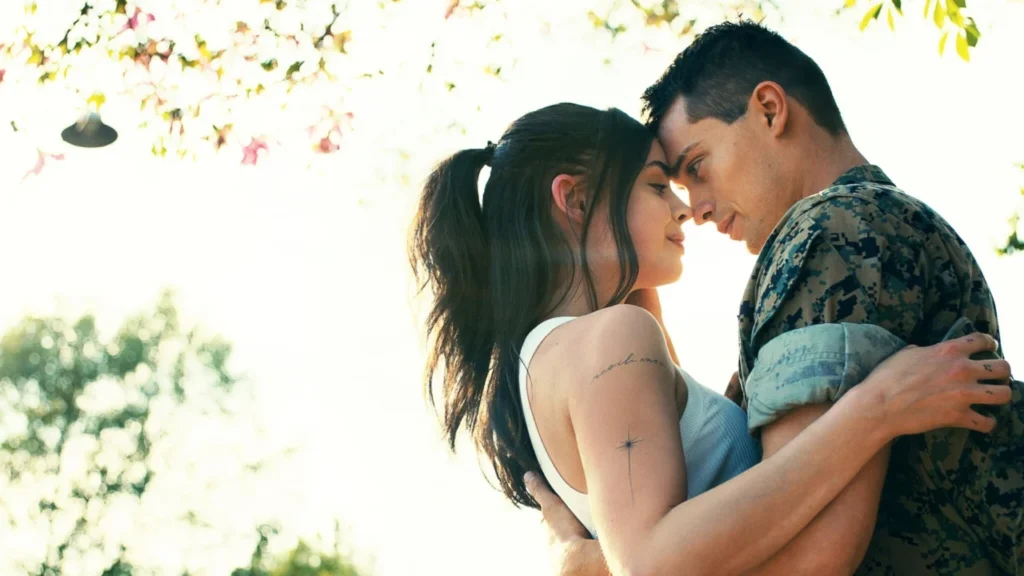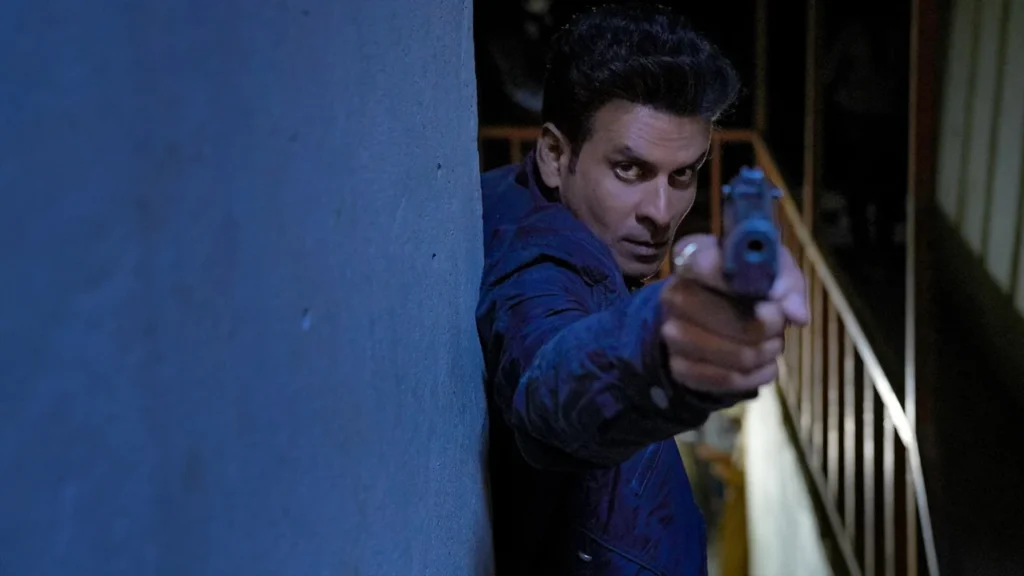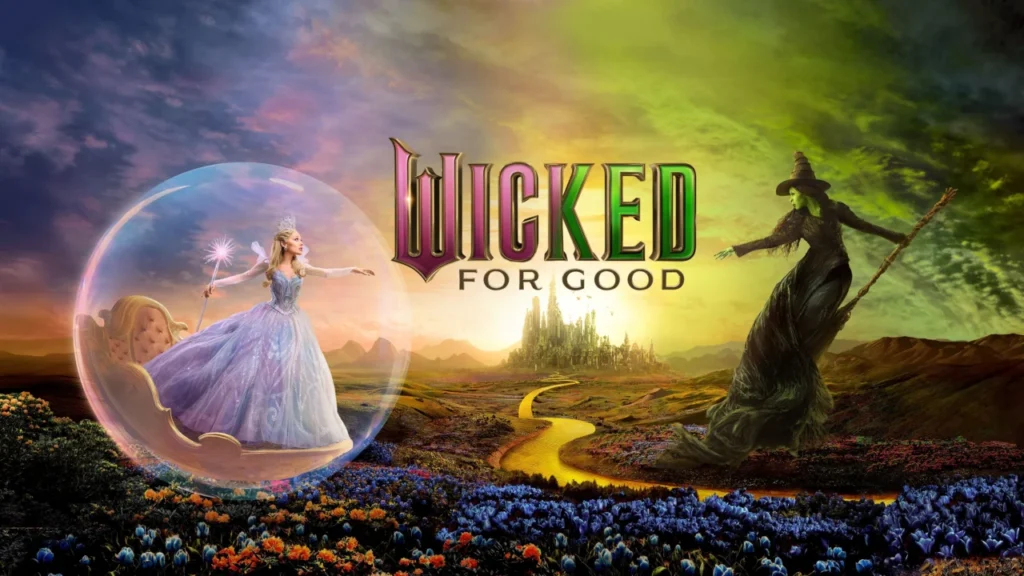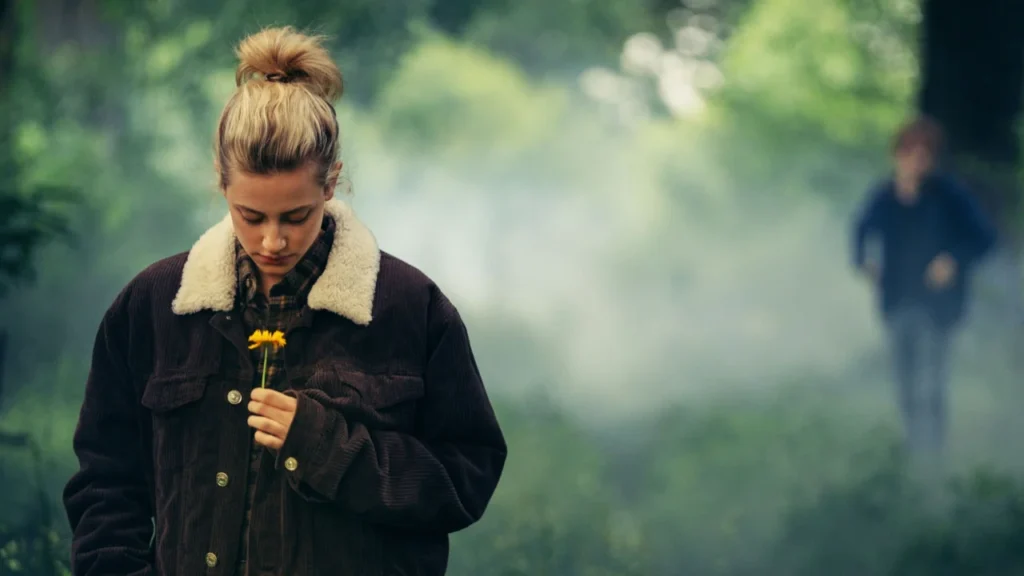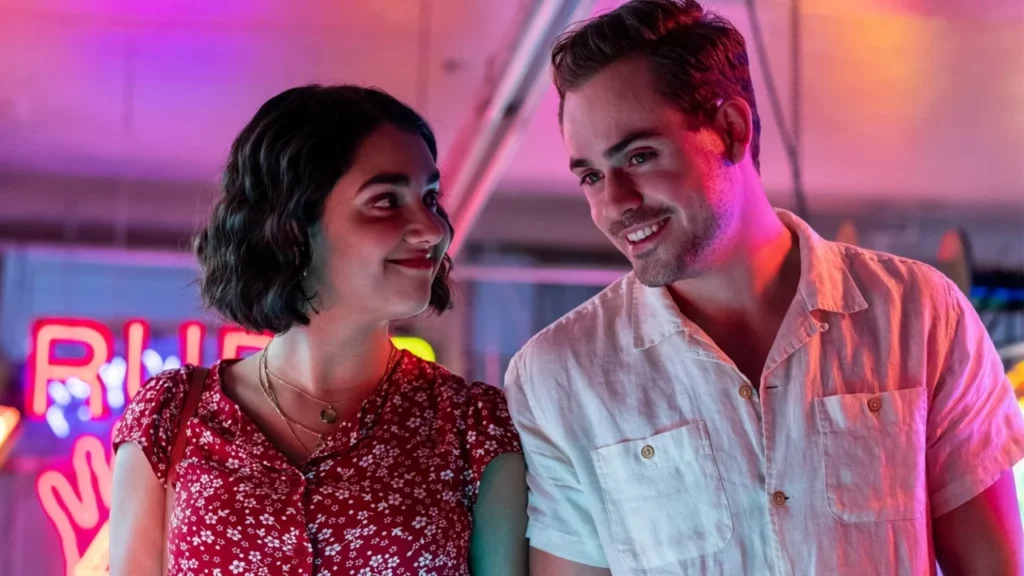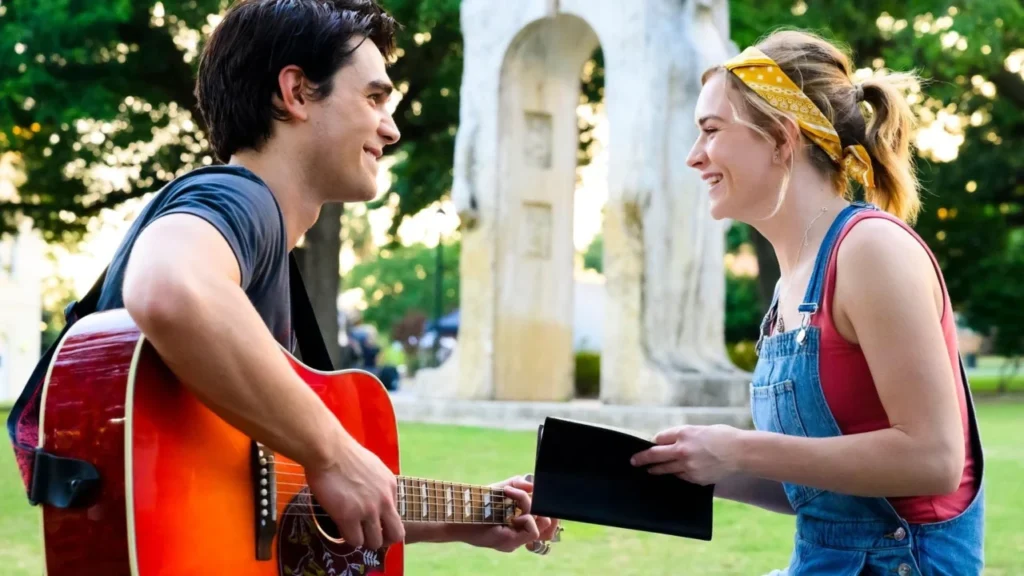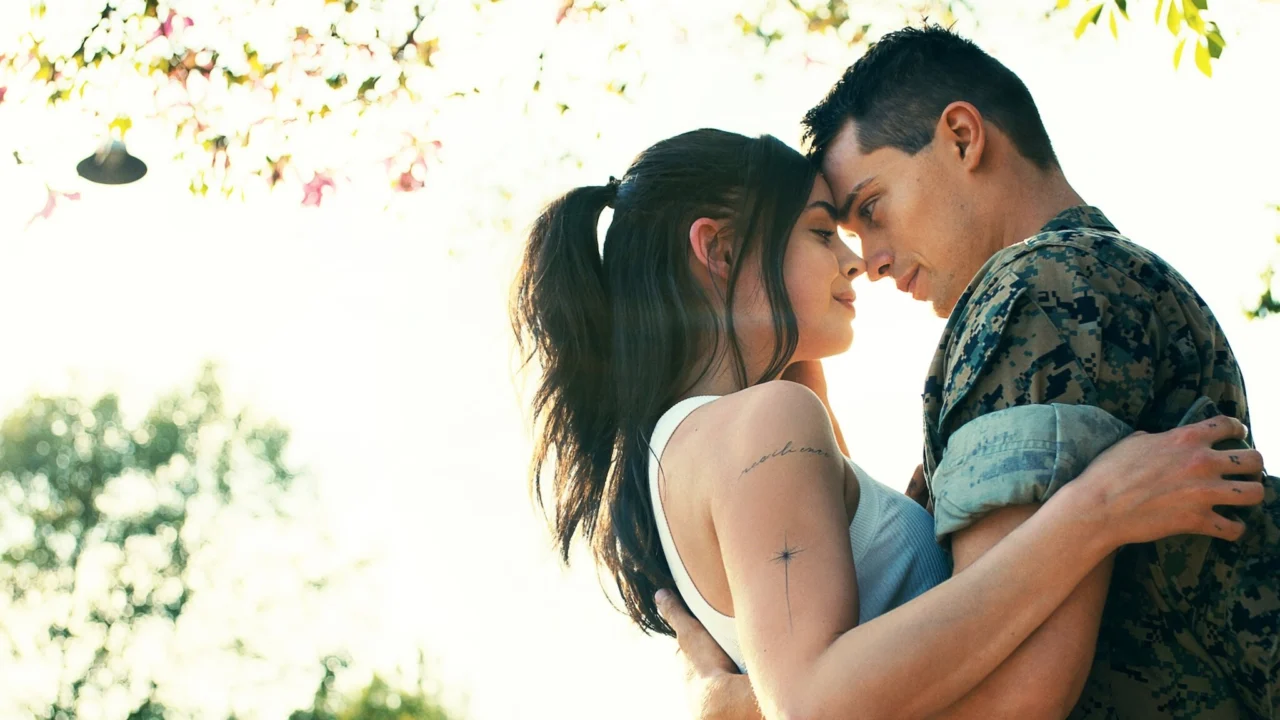
Purple Hearts (2022) Movie REVIEW: This Netflix Romance Divided Critics and Viewers
Purple Hearts dropped on Netflix in July 2022 and quickly turned into one of the year’s most-watched romantic dramas. Elizabeth Allen Rosenbaum directed this story about two people from completely different worlds. Sofia Carson plays Cassie Salazar, a waitress and singer chasing her music dreams, while Nicholas Galitzine takes on Luke Morrow, a Marine dealing with his past mistakes.
The cast also features Chosen Jacobs, Kat Cunning, and Linden Ashby in supporting roles. This movie tries to tackle big issues like healthcare access, military life, and political division in America. It’s based on Tess Wakefield’s book and became a talking point for how it handled romance between people with opposite beliefs.

The Story Behind the Marriage
Cassie juggles multiple jobs in Oceanside, California, but still can’t afford insulin for her type 1 diabetes. When she learns military spouses get full medical benefits, she asks her childhood friend Frankie to marry her. It’s purely for insurance coverage, nothing romantic.
Frankie turns her down, but his friend Luke has money problems too. He owes $15,000 to a drug dealer from his addiction days. Though he’s been clean for two years, the debt puts his family at risk. They strike a deal despite clashing on everything political.
While Luke deploys to Iraq, they email and video chat. What starts as business slowly turns personal. When Luke gets badly hurt overseas, their fake marriage faces a real crisis. The movie asks if two opposites can make it work while potentially facing fraud charges.

Performances That Tried
Sofia Carson brings energy to every scene as Cassie. She co-wrote the film’s songs and performs them throughout. I found her stage presence strong, but the vocal style felt off sometimes. That breathy singing approach pulled me out of moments that should have hit harder emotionally.
Nicholas Galitzine handles Luke’s vulnerability well, especially in scenes showing his struggle with addiction recovery. His best work came when he wasn’t playing the tough Marine stereotype. I noticed the chemistry between them worked during arguments more than romantic moments.
Chosen Jacobs added warmth as Frankie, though his character needed more screen time. The supporting cast did their jobs but didn’t get much to do. Overall, the actors worked hard, but the material limited how deep they could go with these characters.
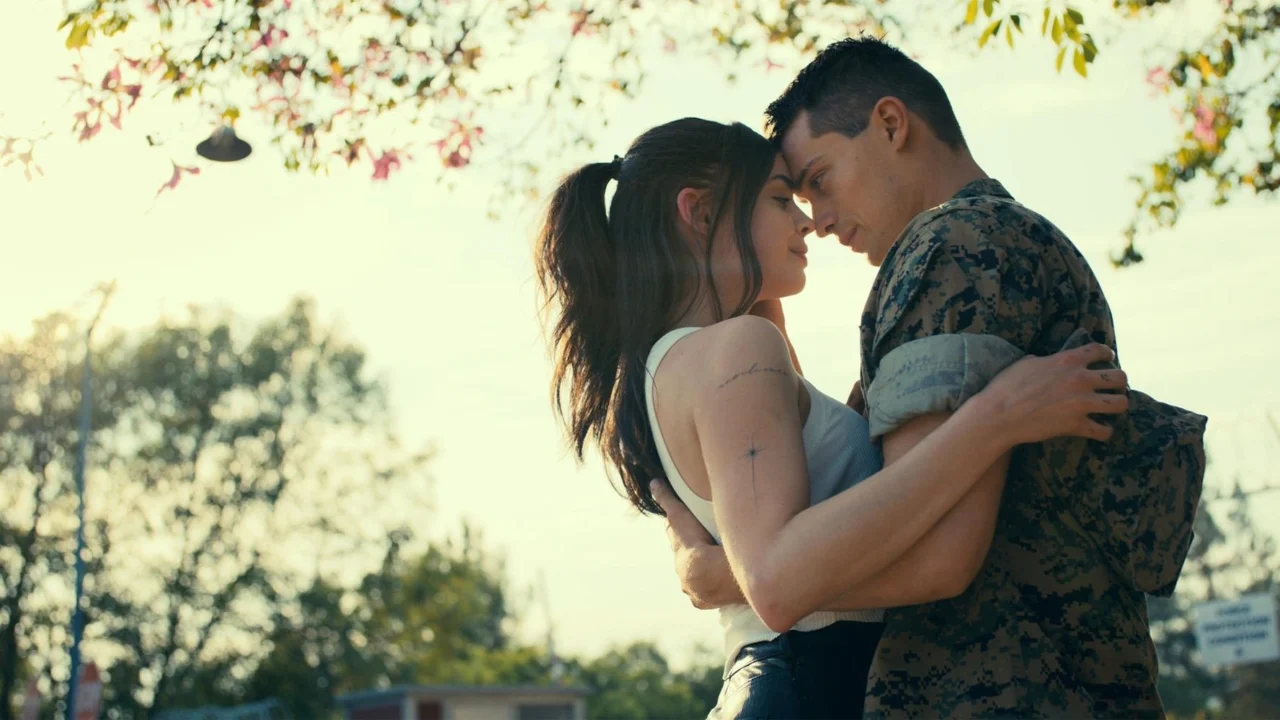
Music That Connected
The soundtrack genuinely worked. Carson’s songs like “Come Back Home” and others added emotional depth that the dialogue sometimes lacked. These weren’t just random musical breaks—they showed who Cassie is and what she wants from life.
I appreciated how the performances felt natural to her character. When she’s on stage with her band, you believe she’s a struggling artist trying to make it. The pop-influenced tracks stayed in my head after watching, which doesn’t happen with most movie soundtracks.
Justin Tranter co-wrote these songs with Carson, and their collaboration paid off. The music became the film’s strongest emotional tool, carrying feelings the script couldn’t quite express through regular conversation.
Serious Topics, Surface-Level Treatment
Purple Hearts brings up healthcare inequality through Cassie’s insulin crisis. It’s a real problem affecting millions of Americans. The film also shows how military deployment strains families and relationships. These are important conversations to have.
I liked seeing two characters with completely different politics learn to respect each other. The movie suggests love can bridge ideological gaps without forcing either person to change their core beliefs. That message feels valuable right now.
But here’s where it frustrated me—the film mentions these issues without really digging into them. Healthcare costs become a plot convenience more than a genuine exploration. Same with the political differences—they’re there to create conflict, not to say anything meaningful about division.
What Didn’t Work
The character writing relies too heavily on stereotypes. Cassie hits every progressive checkbox while Luke represents conservative military values. Neither feels like a complete person with complicated beliefs. They’re ideas wearing attractive faces.
Every plot beat followed the standard romance playbook. I knew exactly where this story was going from minute one. Important scenes happened off-camera, which felt cheap. When the big emotional moments finally came, they didn’t land because we hadn’t earned them.
The two-hour runtime dragged. Musical performances sometimes stopped the momentum cold instead of enhancing the story. The film couldn’t decide if it wanted to be serious drama or light entertainment, so it awkwardly bounced between both.
Critics Vs Regular Viewers
Rotten Tomatoes critics scored it 35% with a 5.1/10 average. Metacritic went lower at 30/100. Professional reviewers called out the stereotype-heavy script and said good-looking leads couldn’t fix weak writing.
Variety pointed out the film mostly served existing Carson fans. The A.V. Club noted the romantic chemistry felt manufactured rather than genuine. Multiple critics mentioned it had potential for something better but settled for easy clichés instead.
Regular audiences saw it differently. IMDb viewers gave it 6.7/10, and Google reviews showed 4.4 stars. Younger viewers especially connected with the story. Many praised the music, enjoyed watching the relationship develop, and valued the message about bridging differences.
The numbers tell the real story—over 240 million hours watched on Netflix. Six weeks in the platform’s top 10. Critics dismissed it, but viewers found exactly what they wanted: a feel-good romance that didn’t ask too much.
Rating: 3/5

